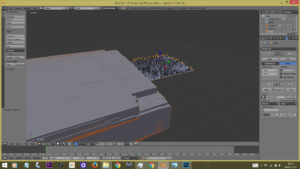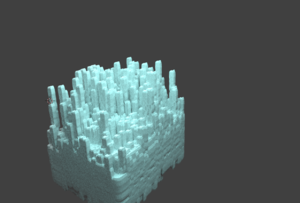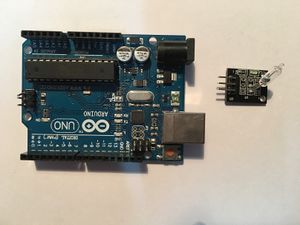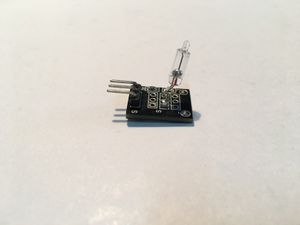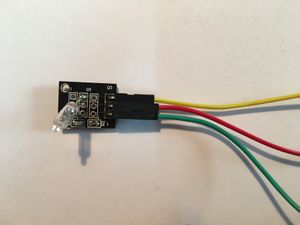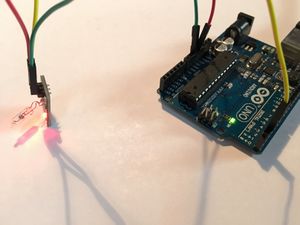Akshay Tiwari
Contents
FIRST ROBOT
I had no idea to build something with just motors. Despite of having some experience with Arduino before, I had no clue about using a transistor with a diode. Previously I had used only a driver IC module with two motors. My general focus is towards creating tools for artists. My recent memory of a decorated thick shake made me create a tool for confectionary art. The tool could be used to create chocolate ornaments, side cup decoration, cream shaping and much more.
On the traditional side I feel it could work well with ink spatters and such effects. The initial design involving an LDR didn't work out since the connections with the diode weren't working as expected though on paper it was heavily discussed and clarified. I am yet so curious about what someone defines as knowing and unknowing while also considering what verifies it. I hope the discomfort is optimal to help me dig deeper and create something challenging by the end of this course. I expect this course to help me further merge my coding skills with various media and hack established systems to perform differently or in a better way. Currently my ideas are leaning more towards sensor based dynamic data visualisation which I would like to try sooner. Probably a VR/AR UI visualisation would be a lovely challenge to take on.
BACK TO THE BASICS
The beginning of the class just was another reflection upon how hardware fabrication is also equally challenging to create as is the electronic programming mechanism that it houses inside.
RESISTANCE
Series shall keep the current in same line while potential drops across the components in a closed circuit. Parallel shall split the current while maintaining the PD across parallel components. These are the bases for derivations too which conclude upon total resistance to be more than individual ones and less than individual ones resp for series and parallel.
PROBLEM(?)
How much resistance is appropriate to connect a 3V LED to a 9V battery?
3V LED on 9V battery would require 300 ohm res(orange black brown ) considering 20mA current. The problem is just a puzzling rephrasing of "what does voltage rating on an LED mean?". The rating assumedly at max current of 30mA allows us to assume a 'safe current' of 20mA and use Ohm's law to solve the problem.
WHAT ARE SENSORS?
The next exploration was pretty interesting wherein ecoli bacteria could glow upon the detection of arsenic. This set me off more into thinking what sensors do artists, particularly traditional impressionists use to detect colours and moods. The immediate thought was considering shadows as sensors- cool shadows indicates most often warm light and vice versa. Similarly skin pigments and absorbed light show presence of different objects around as well as internal state of a person. Subsurface scattering is a "sensor" that senses the materials texture. Occlusion is a sensor of contact. Tonal variations are sensors of form and shape. Every basic element is a sensor in it's own way that is interpreted by the eye and the mind to create a painting.
3D MAP CREATION
As an assignment, I was to create a 3D map of Bangalore or acquire it somehow. I started from scratch in Blender and used a Bangalore map colour coded for height generation. This was used upon a divided surface to create the following models.
SENSOR EXPLORATION: TILT SENSOR
The following tutorial uses a Mercury tilt (KEYES KY-017) tilt sensor.
COMPONENTS:
Tilt Sensor
Arduino UNO
Jumper wires
THE TILT SENSOR:
The mercury tilt sensor utilizes a mercury blob that disconnects upon tilting and short/completes the circuit when lying flat, thus detecting tilt in a binary way. When flat, the sensor module’s LED shall glow. Upon tilting, it will not glow.
The pin terminals and basic circuit are indicated as follows:
ARDUINO CODE FOR TILT SENSOR:
//code for testing tilt sensor
int tilt = 3;
void setup() {
// initialize serial communication at 9600 bits per second:
Serial.begin(9600);
// make the pushbutton's pin an input:
pinMode(tilt, INPUT);
}
void loop() {
// read the input pin:
int tiltState = digitalRead(tilt);
Serial.println(tiltState);
if (tiltState==HIGH){
Serial.println("TILTED")
}
else
{
Serial.println("NOT TILTED")
}
delay(1);
}
The tilt sensor can be used as a switch where tilting is an interaction that shall trigger some output.

